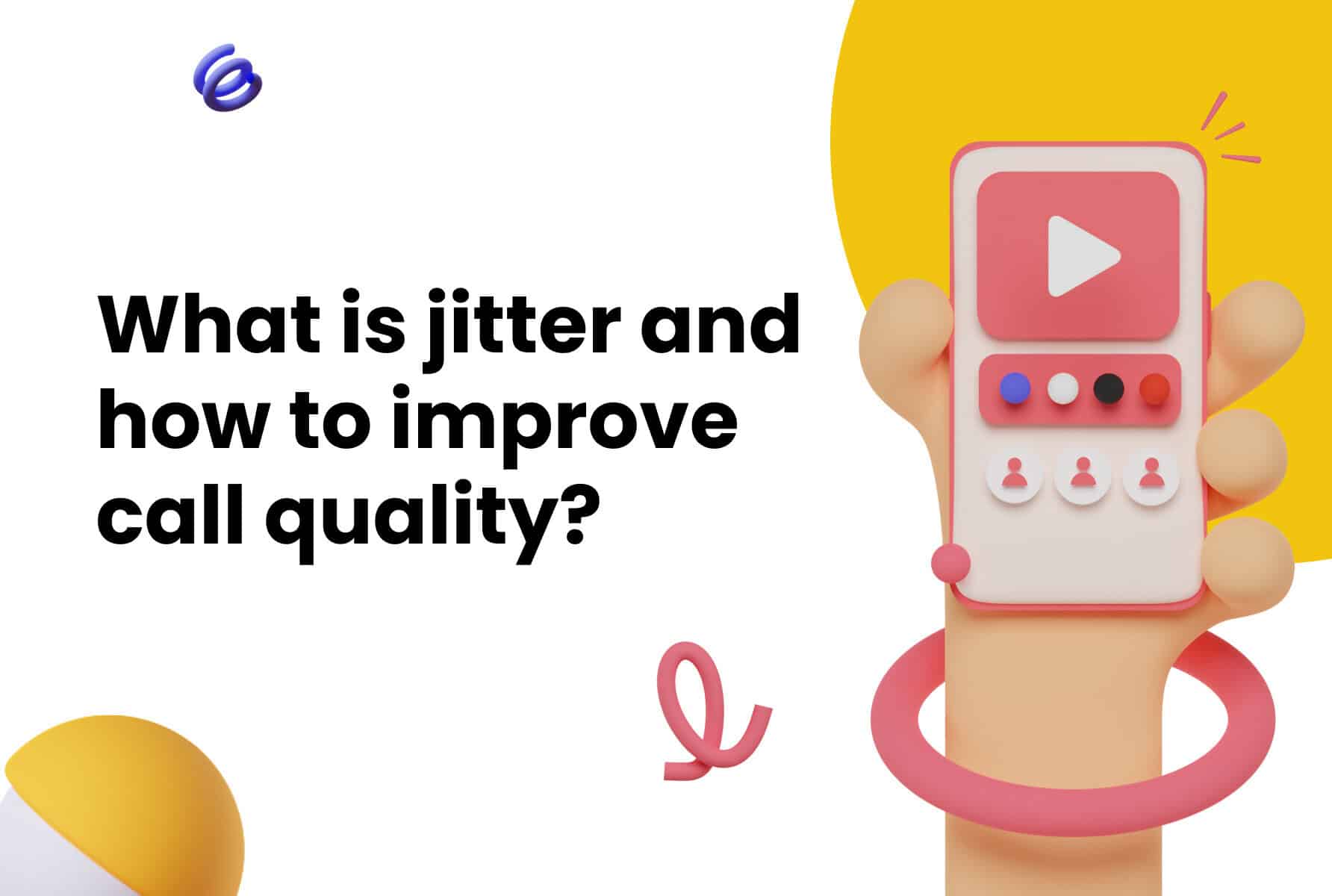
As we move further into 2024, the way businesses communicate continues to change, with VoIP (Voice over Internet Protocol) playing a huge role in this shift. But with this increased reliance on digital communication comes a greater need to protect these channels. VoIP security has never been more important, as cyber threats grow more advanced and the risks to businesses become even more significant. In this article, we’ll walk you through the best practices for keeping your VoIP systems secure in 2024, ensuring your business communications are safe and sound.
Why VoIP Security is Crucial in 2024
As we explore the importance of VoIP security, we must first understand why securing these communication systems has become a top priority for businesses.
The Growing Importance of VoIP Security
VoIP has completely revolutionized the way businesses communicate, offering cost-effective, flexible, and feature-rich communication solutions. However, as VoIP systems become more integrated into business operations, the potential for cyber threats only increases. In 2024, securing VoIP goes beyond just protecting phone calls—it’s about keeping your entire communication system safe.
As businesses become more digital, any security breach can have serious consequences. From leaked data to disrupted customer interactions, poor VoIP security can cause significant harm. That’s why keeping your VoIP systems secure is absolutely essential for protecting your business.
Emerging Threat Landscape

As cyber threats evolve, so do the tactics of attackers looking to exploit vulnerabilities. In 2024, we’re witnessing a shift towards more advanced attacks that are laser-focused on VoIP systems. The growing trend of remote and hybrid work has also opened up additional vulnerabilities, making it more important than ever for businesses to stay proactive in addressing these risks.
General VoIP Security Threats
Before discussing specific threats, it’s important to understand the general security risks associated with VoIP systems. These threats have existed for some time but remain relevant even to modern systems.
Eavesdropping and Call Hijacking

Eavesdropping and call hijacking are two of the most significant threats to VoIP communications, as they directly compromise the confidentiality of your conversations. Eavesdropping occurs when an unauthorized party listens in on your VoIP calls, capturing sensitive information such as business plans, client data, or personal details. This type of attack can happen if VoIP traffic is not properly encrypted.
Call hijacking, on the other hand, involves an attacker taking control of a VoIP call, redirecting it to a different destination, or impersonating one of the call participants. This can lead to serious consequences, such as unauthorized access to confidential information or the spreading of false information.
Both eavesdropping and call hijacking can have severe implications for businesses, including loss of customer trust, regulatory penalties, and financial losses. To reduce these risks, businesses should use strong encryption methods like Secure Real-time Transport Protocol (SRTP) for voice data and Transport Layer Security (TLS) for signaling. Keeping your VoIP systems and devices up to date with the latest patches is also a good way to reduce any vulnerabilities that attackers could target.
Phishing and Vishing Attacks

Phishing, a common cybersecurity threat, has found its way into the VoIP world in the form of vishing, or “voice phishing.” In these types of attacks, cybercriminals use deceptive tactics to trick users into revealing sensitive information, such as login credentials, financial details, or personal information. Vishing often involves the attacker impersonating a trusted entity, such as a bank, service provider, or even a company executive, to gain the victim’s trust and extract the desired information.
Phishing and vishing attacks can be highly effective, as they exploit the human element of security, which is often the weakest link. For example, an attacker might call an employee pretending to be from the IT department, requesting their VoIP login credentials to “resolve an issue.” Once the attacker has obtained these credentials, they can gain unauthorized access to the VoIP system, potentially leading to data breaches, call hijacking, or financial fraud.
The consequences of phishing and vishing attacks can be severe, including compromised customer data, financial losses, and damage to the company’s reputation. To protect against these threats, businesses should implement multi-factor authentication (MFA) to verify user identities before granting access to VoIP systems. Additionally, conducting regular security awareness training for employees can help them recognize and respond to phishing and vishing attempts, reducing the likelihood of a successful attack.
Denial of Service (DoS) Attacks
Denial of Service (DoS) attacks are another significant threat to VoIP systems, targeting the availability of your communication services. In a DoS attack, an attacker floods the VoIP system with excessive traffic, overwhelming the network and causing legitimate calls to be dropped or preventing them from connecting. This can lead to disruptions in business operations, especially for organizations that rely heavily on VoIP for customer support, sales, and internal communication.
DoS attacks can be launched through various methods, such as sending a high volume of SIP (Session Initiation Protocol) requests or exploiting vulnerabilities in the VoIP infrastructure. In some cases, attackers may use botnets—networks of compromised devices—to amplify the attack, making it even more difficult to mitigate.
The impact of a successful DoS attack on a VoIP system can be devastating, leading to lost revenue, customer dissatisfaction, and potential legal liabilities if the attack disrupts critical services. To defend against DoS attacks, businesses should implement traffic filtering and rate limiting on their VoIP networks to detect and block malicious traffic before it overwhelms the system. Additionally, partnering with a VoIP provider that offers DoS protection services can help ensure that your communication systems remain operational even in the face of an attack.
VoIP Security Threats Arising in 2024
While the general threats to VoIP security are concerning, 2024 has brought new challenges that businesses must be prepared to face. These emerging threats reflect the growing complexity of cyber attacks and the need for more advanced security measures.
AI-Powered Voice Bots

Artificial Intelligence (AI) is transforming many aspects of technology, including cybersecurity. Unfortunately, this also means that cybercriminals are using AI to create more sophisticated attacks. AI-powered voice bots can mimic human voices with alarming accuracy, making it easier for attackers to carry out vishing attacks or manipulate automated systems.
These bots can sneak past security measures, trick employees into sharing sensitive information, or even cause disruptions in business operations. As AI technology advances, the threat posed by AI-powered voice bots is expected to grow, making it a big concern for VoIP security in 2024.
Supply Chain Attacks on VoIP Infrastructure
Supply chain attacks have become a major concern across different industries, and VoIP is no exception. In a supply chain attack, cybercriminals target the third-party vendors or service providers that businesses rely on for their VoIP infrastructure. By compromising these vendors, attackers can gain access to the VoIP systems of multiple businesses at once.
These attacks are particularly dangerous because they can be difficult to detect and have far-reaching consequences. A successful supply chain attack on a VoIP provider could potentially compromise the communication systems of hundreds or even thousands of businesses.
Cloud Misconfigurations

As more businesses shift their VoIP systems to the cloud, the risk of security issues from cloud misconfigurations is growing. While cloud services provide great flexibility and scalability, they can also introduce new security risks if not set up correctly. Misconfigurations can leave VoIP systems vulnerable to unauthorized access and data breaches.
For instance, if access controls aren’t properly configured, sensitive VoIP data might be exposed to the wrong people. In addition, incorrect network settings can create weaknesses that hackers might exploit to intercept or disrupt communications. So, it’s crucial to make sure your cloud-based VoIP system is set up correctly.
Hybrid Work Vulnerabilities
The rise of hybrid work environments, where employees split their time between working from the office and working remotely, has introduced new security challenges for VoIP systems. Employees accessing VoIP services from home may not have the same level of network security as they do in the office, making remote connections more vulnerable to attacks.
These vulnerabilities can be exploited by attackers to intercept communications, gain unauthorized access to the system, or launch attacks such as phishing and vishing. Using personal devices for work-related communication can further increase the risk of security breaches. As hybrid work becomes the norm, businesses must adapt their VoIP security practices to address these new challenges.
VoIP Security Best Practices in 2024
In order to stay ahead of evolving VoIP security threats, businesses need a strong security plan that covers both the usual risks and new challenges. Here are some key best practices to help keep your VoIP systems secure and your communications protected.
Encryption and Secure Communication

Encryption is one of the most effective ways to protect VoIP communications from eavesdropping and other forms of interception. By encrypting voice data, businesses can ensure that even if a call is intercepted, the information will be unreadable to unauthorized parties.
Strong encryption protocols, such as SRTP for voice data and TLS for signaling, are essential. These protocols help protect the integrity and confidentiality of VoIP communications. Additionally, businesses should ensure that all endpoints, including phones, softphones, and mobile devices, support these encryption standards in order to maintain secure communication across all channels.
Authentication and Access Control
Strong authentication and access control measures are critical for preventing unauthorized access to VoIP systems. Modern businesses should implement MFA to add an extra layer of security to user accounts. MFA requires users to provide two or more forms of identification before accessing the system, making it much harder for attackers to gain entry.
Access control measures should also be in place to guarantee that only authorized users have access to specific parts of the VoIP system. This includes setting up role-based access controls (RBAC) to limit access based on the user’s role within the organization. By restricting access to sensitive information and system functions, businesses can significantly reduce the risk of insider threats and unauthorized access.
Network Security Measures

A secure network is the foundation of a secure VoIP system. Businesses should implement a range of network security measures to protect their VoIP infrastructure. This includes using firewalls, intrusion detection systems (IDS), and intrusion prevention systems (IPS) to monitor and block malicious traffic.
Additionally, businesses should segment their VoIP traffic from other network traffic to reduce the risk of attacks spreading across the network. Network segmentation can help contain potential breaches and prevent attackers from accessing important systems.
Monitoring and Logging
Keeping an eye on VoIP activity with continuous monitoring and logging is essential for spotting and reacting to security issues as they happen. Businesses should use advanced monitoring tools to catch anything unusual, like strange call patterns or unauthorized access attempts.
These tools should work seamlessly with your organization’s overall security system to give you a complete picture of what’s going on across your network. By staying on top of VoIP activity and reviewing logs, you can quickly spot potential threats and address them before they become major problems.
Supply Chain Security
Given the rise of supply chain attacks, it’s more important than ever to make sure that your VoIP service providers and vendors have powerful security measures in place. Businesses should conduct thorough security assessments of their VoIP providers, including reviewing their security policies, practices, and certifications.
Additionally, businesses should establish clear contracts with their providers that outline security requirements and responsibilities. This includes ensuring that the provider has a plan in place for responding to security incidents and that they conduct regular security audits to identify and address vulnerabilities.
Incident Response and Recovery

Even with the best security measures in place, it’s still possible for a security breach to occur. That’s why having a strong incident response and recovery plan is essential for minimizing the impact of a VoIP security incident. Businesses should make sure that their incident response plan includes specific procedures for addressing VoIP-related security threats.
This plan should outline the steps to take in the event of a security breach, including how to contain the threat, how to communicate with stakeholders, and how to recover from the incident. Regularly testing the incident response plan through simulations and drills can help ensure that your team is prepared to respond effectively to a real-world security incident.
As we move further into 2024, keeping your VoIP systems secure is more important than ever. With cyber threats becoming more advanced and our reliance on digital communication growing, it’s crucial for businesses to be proactive about their VoIP security. By following the best practices we’ve covered, you can strengthen your communication channels, protect sensitive information, and keep your business resilient against new security challenges.
VoIP security isn’t just about stopping breaches—it’s about creating a reliable and secure communication system that helps your business thrive. By staying up-to-date with the latest threats and continually enhancing your security measures, you can make sure that your VoIP systems stay safe and your business communications remain protected in 2024 and beyond.




